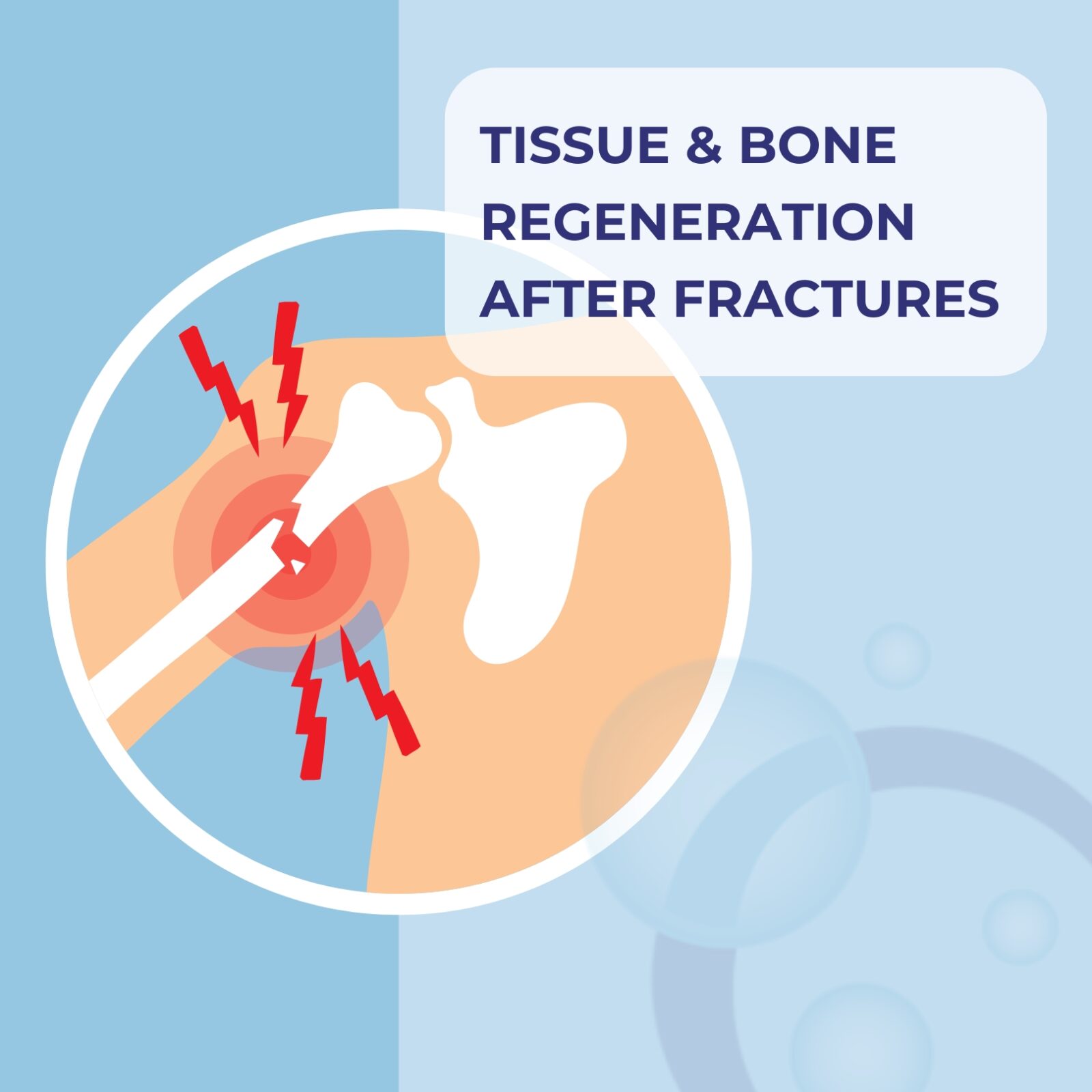
Accelerating Recovery: The Role of Hyperbaric Oxygen Therapy in Tissue and Bone Regeneration After a Fracture
Fractures can be painful and often lead to extended periods of rehabilitation. During this recovery phase, the body undergoes intricate processes to repair broken tissues and bones. While traditional healing methods like rest, physical therapy, and medications are vital, Hyperbaric Oxygen Therapy (HBOT) has shown significant potential in accelerating the recovery process. This post delves into how HBOT plays a critical role in tissue and bone regeneration after fractures and how it aids in speeding up the overall recovery process.
What is Hyperbaric Oxygen Therapy (HBOT)?
Hyperbaric Oxygen Therapy is a medical treatment that involves breathing 100% oxygen in a pressurized chamber. This elevated pressure allows the body to absorb oxygen at levels much higher than normal, enhancing the oxygen supply to tissues and organs. The increased oxygen delivery facilitates various healing processes, which include reducing inflammation, promoting cell regeneration, and improving circulation—all critical factors when recovering from a fracture.
The Science Behind HBOT and Bone Regeneration
Bone healing is a complex biological process that involves inflammation, the formation of new bone tissue, and the remodeling of the bone structure. When a fracture occurs, the body begins a natural healing response by first forming a blood clot around the fracture site, which is then replaced by soft tissue known as callus. Over time, this callus hardens into bone, restoring strength and structure to the area.
HBOT aids in this process by increasing oxygen supply to the damaged tissues. Oxygen is crucial for collagen formation, which is essential for the structural integrity of new bone tissue. Additionally, HBOT stimulates the production of growth factors that accelerate the formation of new blood vessels (angiogenesis), improving nutrient and oxygen delivery to the injured area. This heightened oxygenation speeds up the conversion of the callus into mature bone, reducing recovery time.
Tissue Regeneration and Healing With HBOT
Bone fractures are often accompanied by soft tissue injuries, such as ligament, tendon, or muscle damage. While the primary focus of HBOT is on bone regeneration, it also significantly impacts the healing of surrounding tissues. By promoting oxygenation, HBOT helps stimulate fibroblast activity, which is essential for collagen production and tissue repair.
The therapy also enhances the body’s ability to fight infection, which is crucial when dealing with open fractures or surgical wounds. Increased oxygen levels help white blood cells fight off infection, improving the healing environment and reducing the risk of complications. Furthermore, the improved blood flow reduces swelling and promotes faster tissue recovery.
Accelerating Recovery Time With HBOT
One of the key benefits of Hyperbaric Oxygen Therapy is its ability to accelerate recovery time after a fracture. Research has shown that patients receiving HBOT for bone and tissue injuries often experience reduced swelling, less pain, and faster tissue regeneration. This can mean returning to daily activities and physical therapy sooner, which is especially beneficial for athletes or individuals with active lifestyles.
For fractures that are slow to heal, or in cases where the bone healing process has stalled (a condition known as nonunion or delayed union), HBOT can be a game-changer. Studies have demonstrated that consistent use of HBOT in these cases can stimulate the bone healing process and lead to improved recovery outcomes, potentially avoiding the need for further surgical intervention.
Case Studies and Research on HBOT in Fracture Healing
Multiple clinical studies and case reports have provided evidence of the effectiveness of HBOT in fracture healing. In a study published in the Journal of Bone and Mineral Research, researchers found that HBOT significantly enhanced the healing of fractures in animal models by promoting bone growth and reducing healing time.
Furthermore, a review of studies in The Journal of Orthopaedic Surgery and Research concluded that HBOT was beneficial in treating delayed and nonunion fractures, showing notable improvements in bone healing and pain reduction. The research highlights that by increasing the oxygen supply to the injured area, HBOT facilitates the optimal conditions necessary for bone regeneration.
Conclusion
Hyperbaric Oxygen Therapy is an innovative treatment that offers numerous benefits for those recovering from bone and tissue injuries, particularly fractures. By providing the body with an enhanced oxygen supply, HBOT accelerates bone regeneration, promotes tissue healing, and reduces recovery time. As research continues to expand on its benefits, it is becoming an increasingly popular option for both acute and chronic fracture recovery. If you’re recovering from a fracture and looking for ways to optimize healing, consider a consultation with a Hyperbaric Physician to determine if it’s right for you.